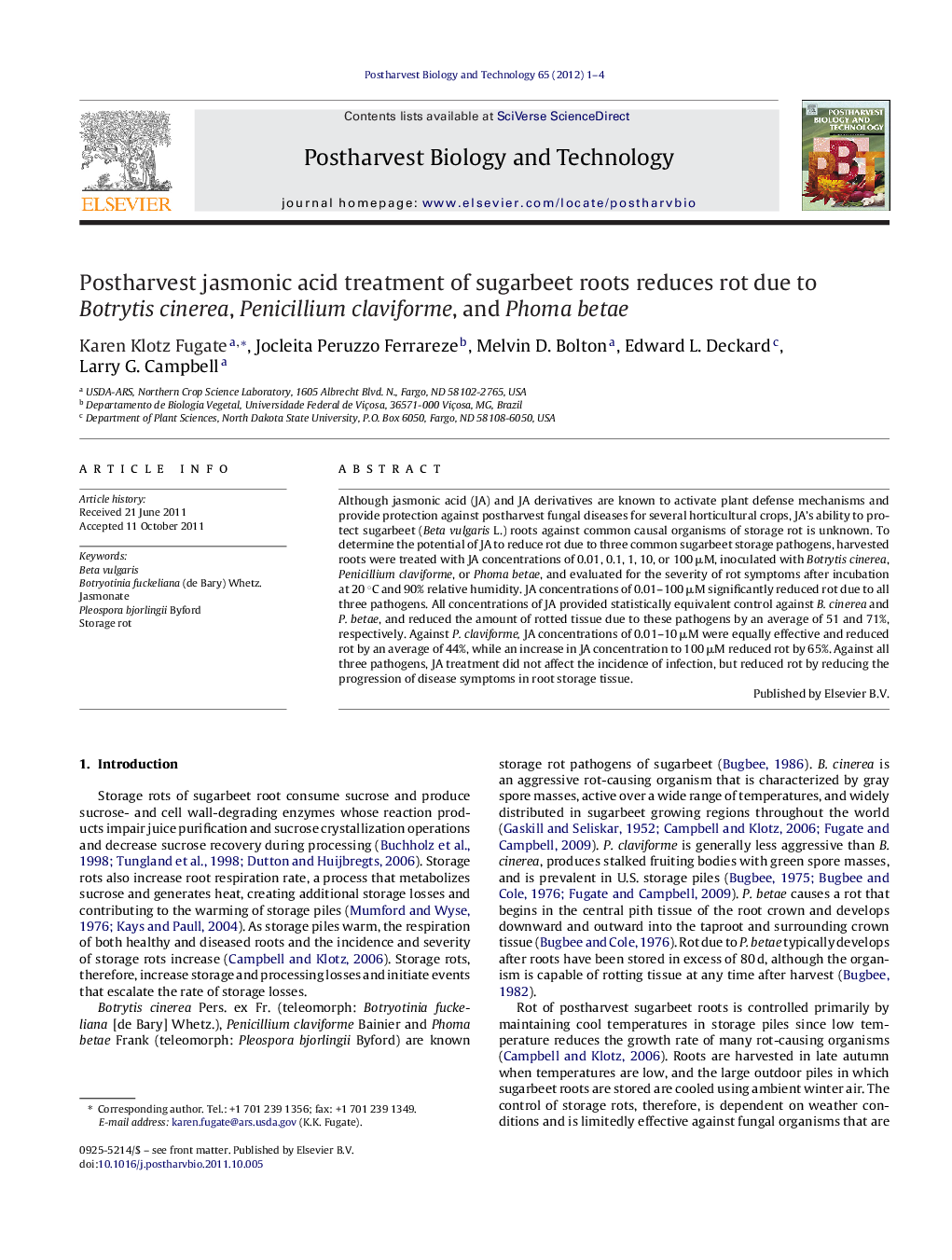| کد مقاله | کد نشریه | سال انتشار | مقاله انگلیسی | نسخه تمام متن |
|---|---|---|---|---|
| 4518786 | 1625029 | 2012 | 4 صفحه PDF | دانلود رایگان |

Although jasmonic acid (JA) and JA derivatives are known to activate plant defense mechanisms and provide protection against postharvest fungal diseases for several horticultural crops, JA's ability to protect sugarbeet (Beta vulgaris L.) roots against common causal organisms of storage rot is unknown. To determine the potential of JA to reduce rot due to three common sugarbeet storage pathogens, harvested roots were treated with JA concentrations of 0.01, 0.1, 1, 10, or 100 μM, inoculated with Botrytis cinerea, Penicillium claviforme, or Phoma betae, and evaluated for the severity of rot symptoms after incubation at 20 °C and 90% relative humidity. JA concentrations of 0.01–100 μM significantly reduced rot due to all three pathogens. All concentrations of JA provided statistically equivalent control against B. cinerea and P. betae, and reduced the amount of rotted tissue due to these pathogens by an average of 51 and 71%, respectively. Against P. claviforme, JA concentrations of 0.01–10 μM were equally effective and reduced rot by an average of 44%, while an increase in JA concentration to 100 μM reduced rot by 65%. Against all three pathogens, JA treatment did not affect the incidence of infection, but reduced rot by reducing the progression of disease symptoms in root storage tissue.
► In stored sugarbeet roots, jasmonic acid (JA; 0.01–100 μM) reduced rot due to Botrytis cinerea by 51%.
► JA (0.01–100 μM) reduced rot due to Phoma betae by 71%.
► JA (0.01–10 μM) reduced rot due to Penicillium claviforme by 44%.
► JA (100 μM) reduced rot due to P. claviforme by 65%.
► JA reduced severity of disease symptoms but did not alter incidence of infection.
Journal: Postharvest Biology and Technology - Volume 65, March 2012, Pages 1–4